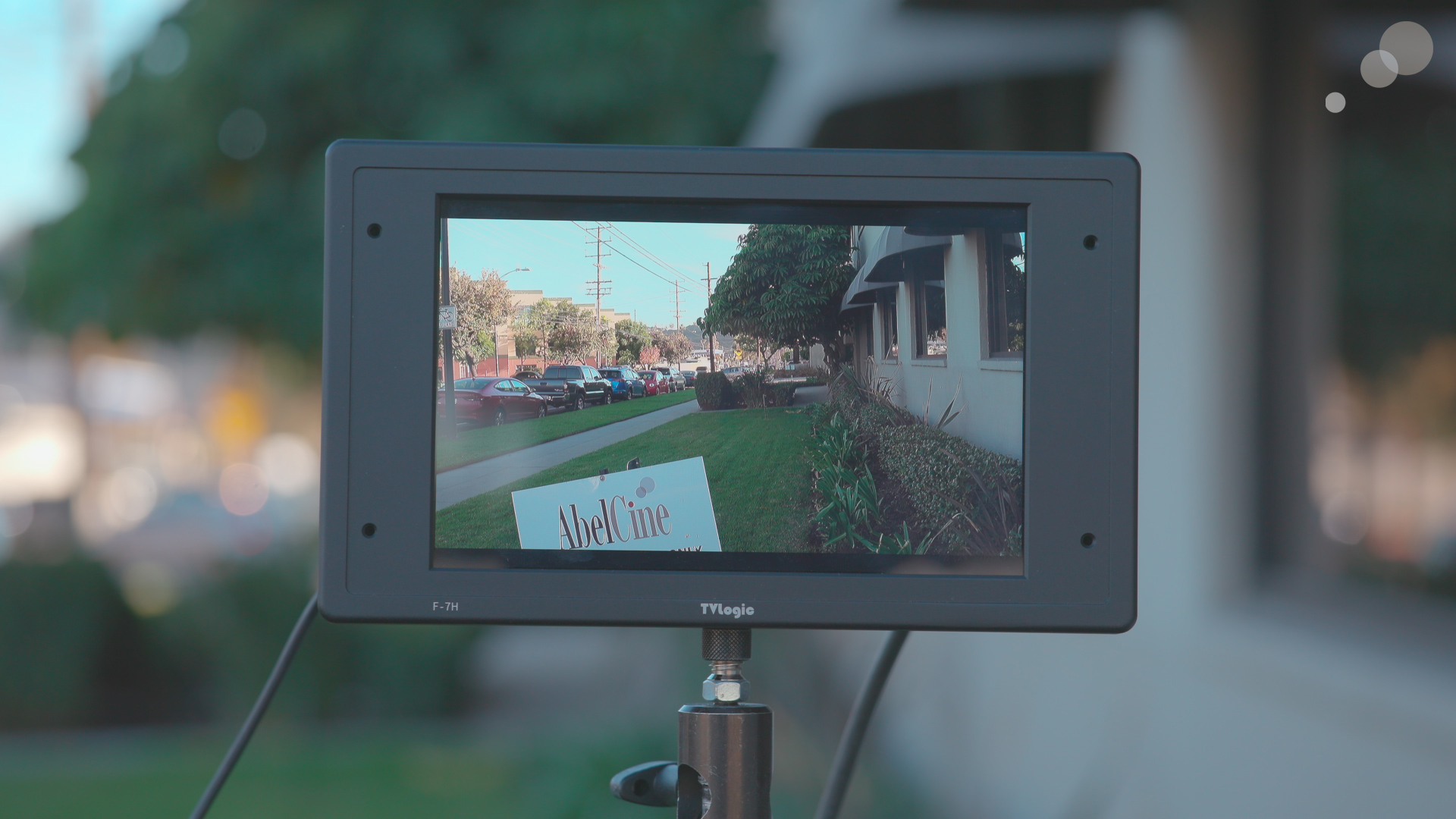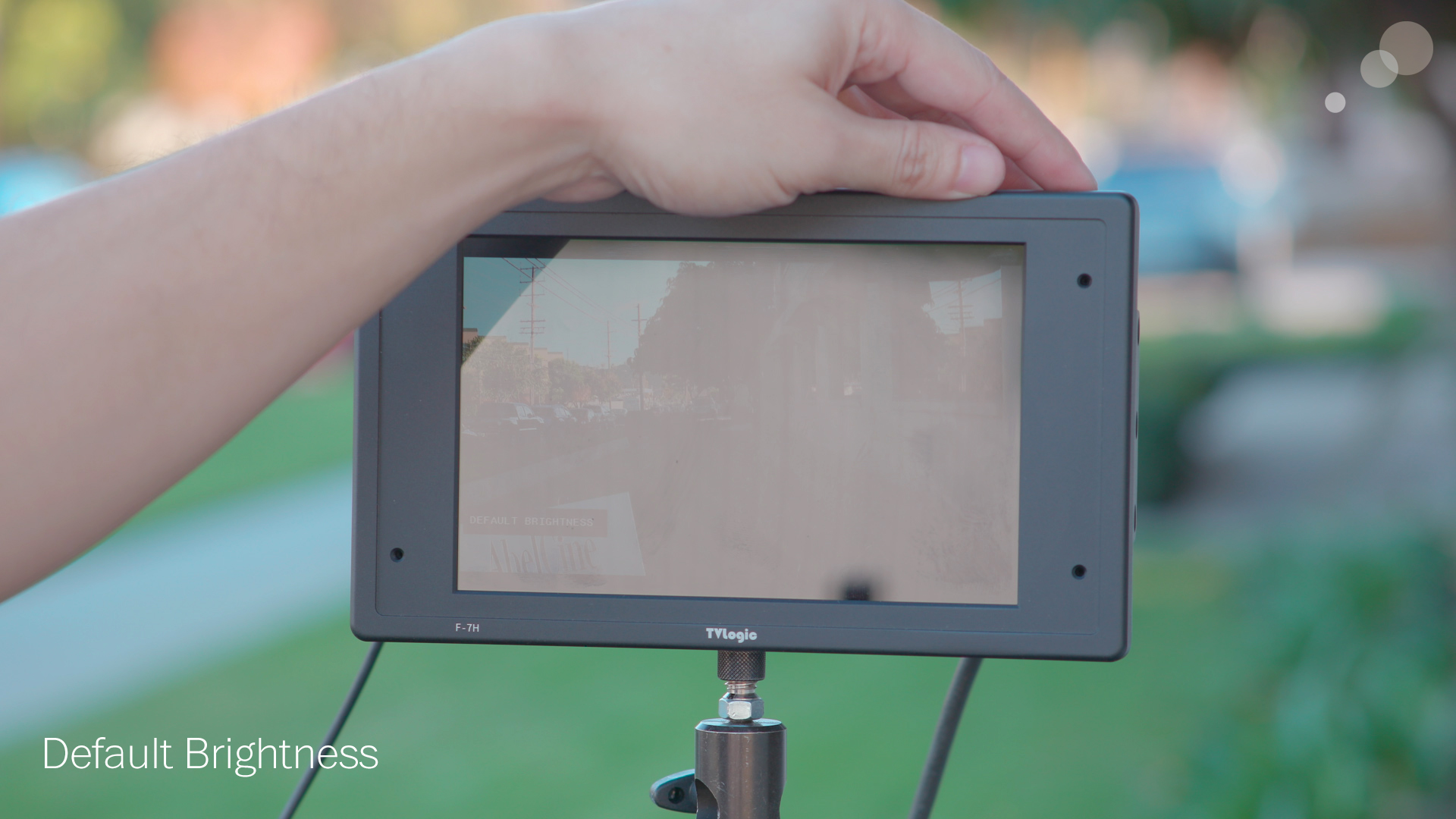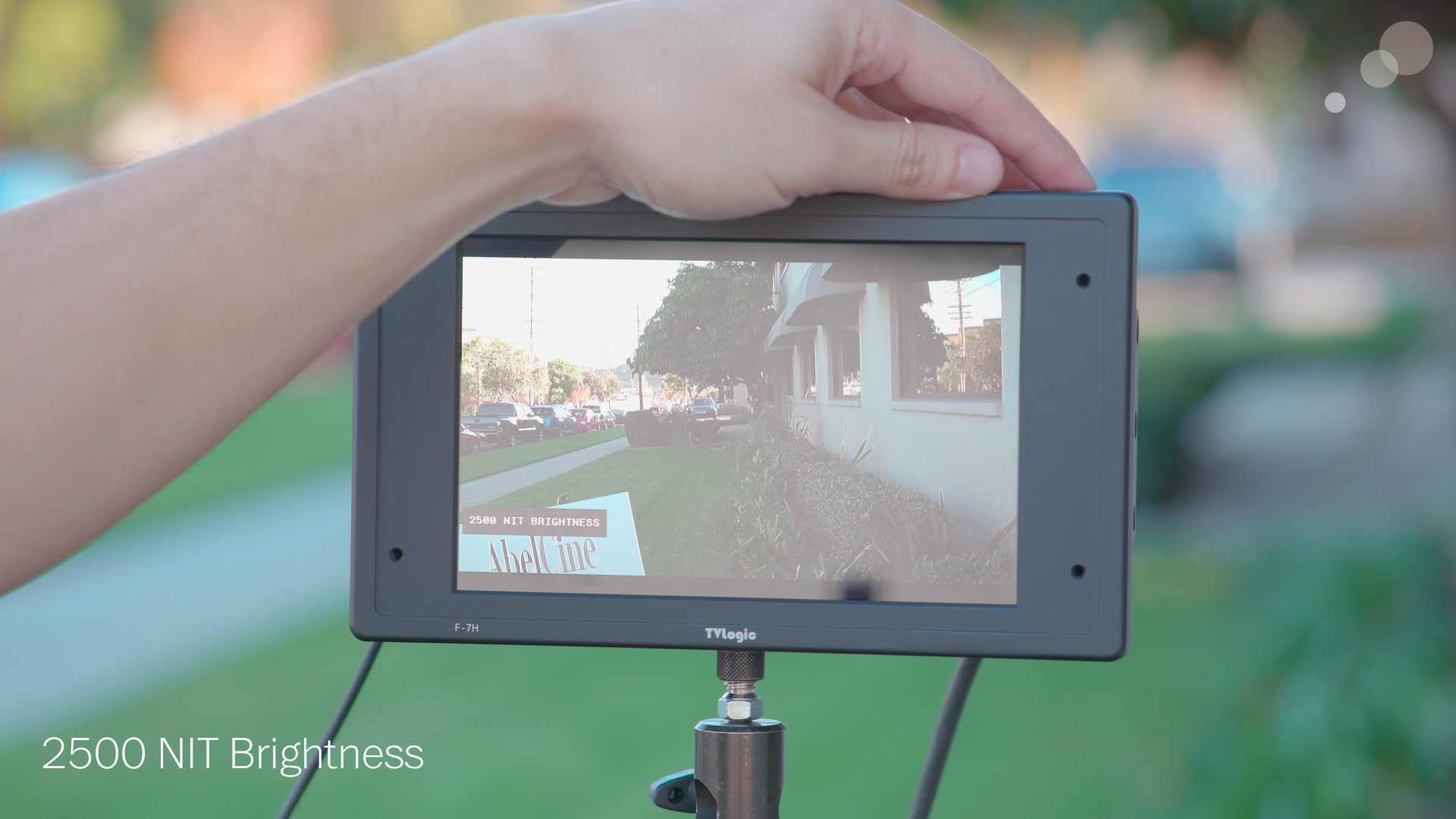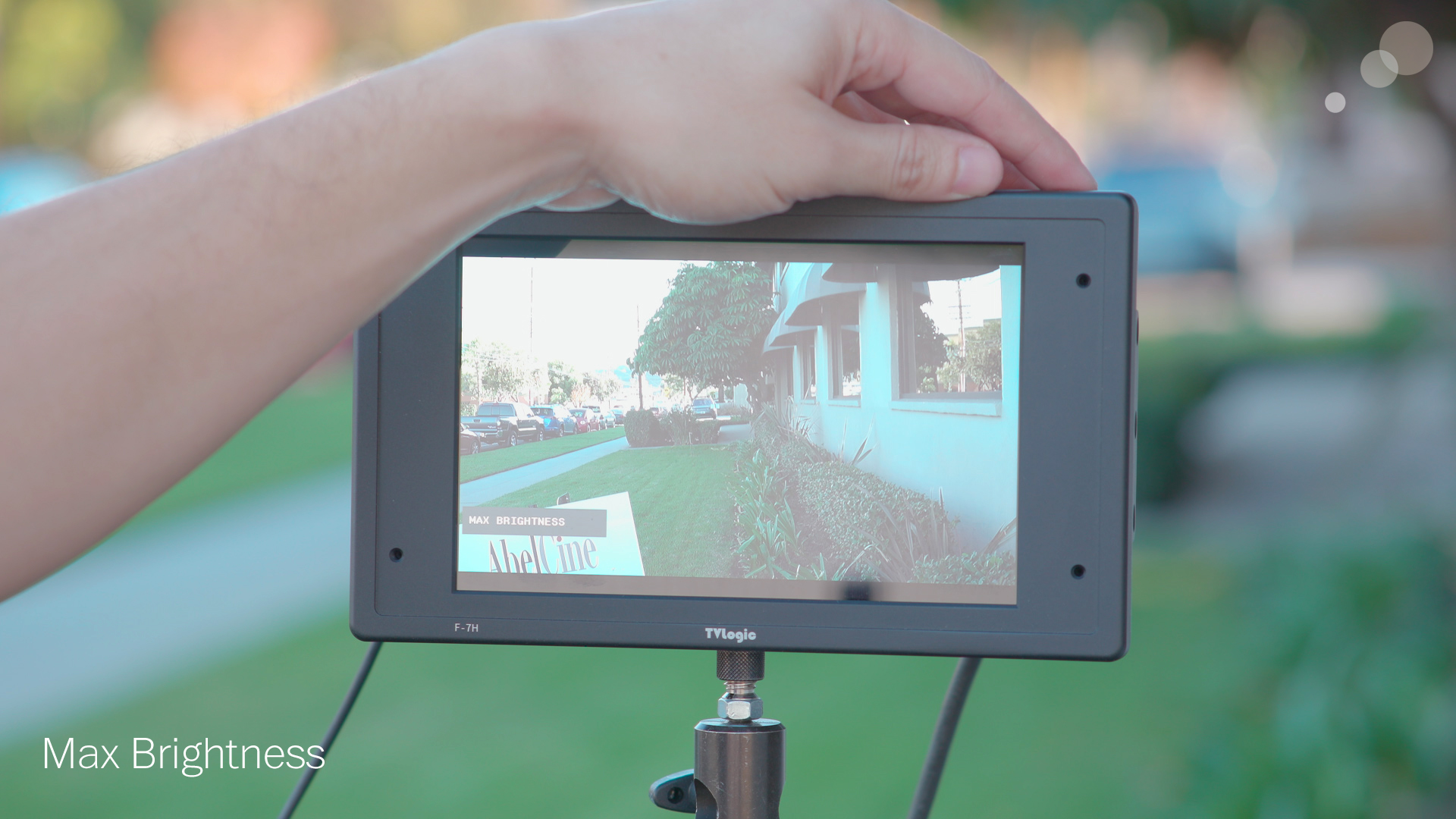
In hand, the F-7H has all the trappings of your typical TVLogic product – including a robust build quality and many familiar extra features, such as focus assist, aspect ratio markers, waveform and vectorscope. 3D LUT support is also present, including pre-loaded and user uploadable LUTs. The pre-loaded LUTs cover many common camera log curves and HDR emulation for PQ and HLG. The monitor has both SDI and HDMI signal processing and, like other models from TVLogic, will cross convert the signal so either output can be used regardless of input. I found the updated software and menu layout to be much more intuitive than previous models, though a few settings do take some time to track down (such as brightness and backlight luminosity being in separate menus).
As mentioned, the star of the show is the exceptionally bright panel. The backlight intensity can be fine tuned in the menu, or you can select between a “standard” base brightness, a 2500 NIT level, and a maxed out 3600 NIT level. I like to set the max brightness setting to one of the monitor’s three function buttons so I can quickly cycle through the different backlight levels without having to access the menu. Combined with the monitor’s semi-gloss anti-reflective coating, I found it very viewable in direct sunlight, harsh reflections and broad diffused lights, like overcast skies or close range soft lights.



After trying it out in these different situations and lighting conditions, it's easy to see how this monitor would be extremely useful to both camera assistants and camera operators. It's ideal for those who need a screen that is bright enough to see outdoors, or in other bright lighting conditions, without needing to micromanage viewing angles or add a bulky hood. The F-7H would be a great fit for a Steadicam operator, for instance. I rigged the monitor to one of our Steadicam Zephyrs with no modification; the ample mounting points, especially on the sides of the monitor, mean that making a balanced monitor bracket should be fairly simple. The monitor would work equally well attached to a MoVI or Ronin.
It should be noted that such an extreme level of brightness does seem to come at a cost to color accuracy. In the normal backlight mode, the screen is fairly faithful towards color, but once the 2500 NIT level is selected, there is a strong color shift–which looks akin to a camera that hasn't been white-balanced. Our sample shifts noticeably red when this mode is used. When the 3600 NIT mode is activated, the monitor shifts again, taking on a slightly cool tone that was less dramatic than the warm shift of the 2500 NIT mode to my eye.
I spoke to TVLogic about this and it is something they are aware of. They noted to me that the panel color shift “settles” as it runs and gets up to typical operating temperature. While true, I’d still recommend sticking to the intended use of the monitor, as a high bright framing or focus confidence monitor, and avoid making color critical judgements with it. The color shift should not affect the majority of users who are looking for the absolute brightest monitor they can get. However, users interested in a general purpose monitor who may have some need of color accuracy should be aware of this disadvantage when using the brightest settings.
Overall the F-7H is an extremely impressive 7" display that is going to be on the short list of monitor choices for camera assistants and operators. Other than slight color accuracy improvements to the high brightness settings, I can't think of many other things I’d want to add for a monitor in this category.











AbelCine encourages comments on our blog posts, as long as they are relevant and respectful in tone. To further professional dialog, we strongly encourage the use of real names. We reserve the right to remove any comments that violate our comment policy.
AbelCine publishes this blog as a free educational resource, and anyone may read the discussions posted here. However, if you want to join the conversation, please log in or register on our site.
We use Disqus to manage comments on this blog. If you already have a Disqus account registered under the same email as your AbelCine account, you will automatically be logged in when you sign in to our site. If not, please create a free account with Disqus using the same email as your AbelCine account.